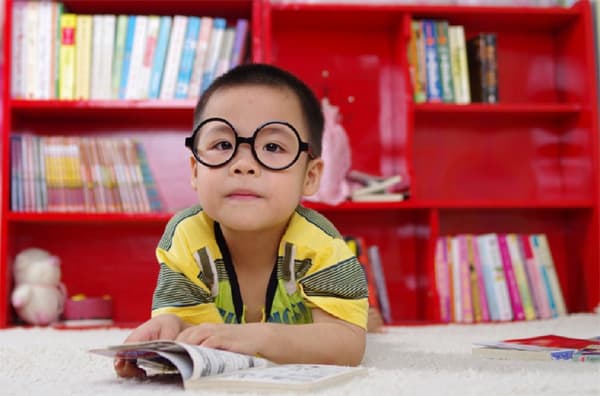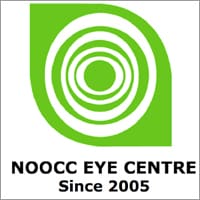10 Tell-Tale Signs That Your Child May Not Be Seeing As He Should
Submitted by Advertiser KiasuParent

A child’s vision is not fully developed when they are first born. As the children grow older, their vision improves as they are exposed to the variety of things they see. Sometimes, there may be eye problems that prevent this much-needed exposure that could delay their vision development. This may result in various eye conditions that can happen early on in childhood that may affect their vision such as lazy eye, squint and eye coordination issues. These eye conditions can have a significant effect on their learning experience early on in life. Most children with visual issues are usually not aware that what they experience is abnormal, so do not alert their parents to this.
Generally eighty percent of what children learn in school is taught visually. So, if your child has an uncorrected vision problem, it could affect his or her learning experience. Early detection of vision problem is crucial at preschool age.
Singapore is known to have high prevalence of short-sightedness. Early eye checks for your child, enable you to assess his/her risk of developing myopia and you can make lifestyle adjustments to reduce this risk.
Comprehensive eye examinations are necessary to detect potential eye problems early. Detecting eye problems that occur whilst your child’s vision is still developing help to avoid significant delays in future. Routine eye checks allow you to monitor your child’s visual development and tailor strategies to achieve optimal vision.
There are non-verbal cues that may suggest potential issues that a child need to be checked out.
Here are 10 tell-tale signs that your child may have a visual problem.
1. FREQUENT EYE-RUBBING
Children do often rub their eyes when they are tired. However if a child rubs his eyes while he is trying to concentrate on something, it may suggest that he has a vision problem. This is usually suggestive of some form of discomfort to the eyes, be it itchiness or irritation. A check of the child’s eye health can help determine a potential cause to this habit.
2. CLUMSINESS
If a child is comparatively more clumsy than his or her peers, this can sometimes be due to an unaddressed visual problem. Symptoms include frequently bumping into things, falling down or not being able to properly catch a ball.
3. SQUINTING
Squinting can be a child’s subconscious way of dealing with blurry vision in an effort to see well. This can often be observed whilst the child is watching TV, in class or when looking at a distant object. Teachers and parents should be on the lookout for students who have to squint to see the board or an object at a distant.
4. CLOSING ONE EYE
If you notice your child frequently closing one eye to perform visual tasks, this can be an effort to eliminate possible double vision due to abnormal eye coordination. This habit could indicate a refractive or binocular vision problem that interferes with the ability of the two eyes to work together comfortably as a team. Double vision is often quite disconcerting and uncomfortable. So closing one eye can sometimes be an effort to eliminate this symptom.
5. SITS TOO CLOSE TO THE TELEVISION
For some, it may just be a bad habit. But for others, frequently sitting too close to the television can be a sign that a child may not be able to see clearly.
6. FREQUENT HEAD TILTS/TURN
A constant head tilt or turn may be a compensatory action to poor eye alignment. This action can occur when a child is trying to find a head position that allows for the most comfortable vision.
7. POOR CONCENTRATION
A child with poor concentration should always be evaluated for any unaddressed vision problems – especially those relating to eye coordination. This is because poor visual comfort can lead to poor concentration. Imagine a child who cannot read with comfortable vision – it is no surprise when he/she is unable to fully concentrate.
8. DISLIKE FOR READING / NEAR WORK
A robust and efficient visual system is essential for sustaining periods of near work. A child must be able to comfortably coordinate both their eyes in order to focus on a near task. Without comfortable near vision, near tasks can lead to symptoms such as fatigue or sore eyes. As a result, a child may choose to avoid such tasks.
9. SLOW COPYING
There are some focusing issues that can affect a child’s ability to change focus from far to near and vice versa efficiently. This can sometimes be translated to a slower copying rate as the activity is disrupted by a child’s vision problems.
Good vision is necessary for a child’s well-rounded development. It is not enough to just establish that a child can see small details. All children must be evaluated for good eye coordination, eye teaming and focusing ability. So, this will ensure that their dynamic visual systems are robust enough to cope with the ever-increasing visual demands they face at home and at school.
10. CREEPING TOO CLOSE TO READ
If you find yourself constantly reminding your children to pull their books further from themselves, it could be an indication of a vision issue. A child should always be evaluated for any unaddressed vision problems as early as possible.
MESSAGE FOR PARENTS
Invest in your child’s visual health and the benefits are manifold. Early detection of eye problems leads to better visual outcomes and ensures that the quality of life is not compromised.
Acquire good knowledge of educational eye care journey and experience holistic clinical eye care services, you and your child can live up to your dreams without visual hindrance.
Register your child for Part 1 of our Preschool Level field trip program to learn more about the eye and its functions; such as shape & size of the eye, difference between clear/blur/double vision through interactive presentation, activities and games. This program is designed for 4 to 6 years old. Prior booking is necessary.
Parents may also learn more about their child’s vision to better encourage good development.
*Special Program Fee for Part 1 of Preschool Level field trip program for KiasuParents’ Members only, at *$10 per child/adult with GST. (Usual Program Fee is $13 per child/adult with GST).
The above Special Program Fee is valid till 31 December 2018. *Terms & Conditions apply.
This program is provided and conducted by: Noocc Eye Centre : Vision Care Hub, located at 190 Changi Road, #B1-01 Singapore 419974.
1. More information about Noocc Eye Centre : Vision Care Hub programs can be found at: https://www.kiasuparents.com/kiasu/service-provider/noocc-eye-centre-vision-care-hub/
2. More information about Noocc Eye Centre : Clinical Services can be found at: https://www.kiasuparents.com/kiasu/service-provider/new-optometry-and-ocular-care-centre pte-ltd-noocc-eye-centre/
Please contact Noocc Eye Centre for more information or to register for the program:-

Tel: 6471 1771
Email: [email protected]
Website: www.noocc.com